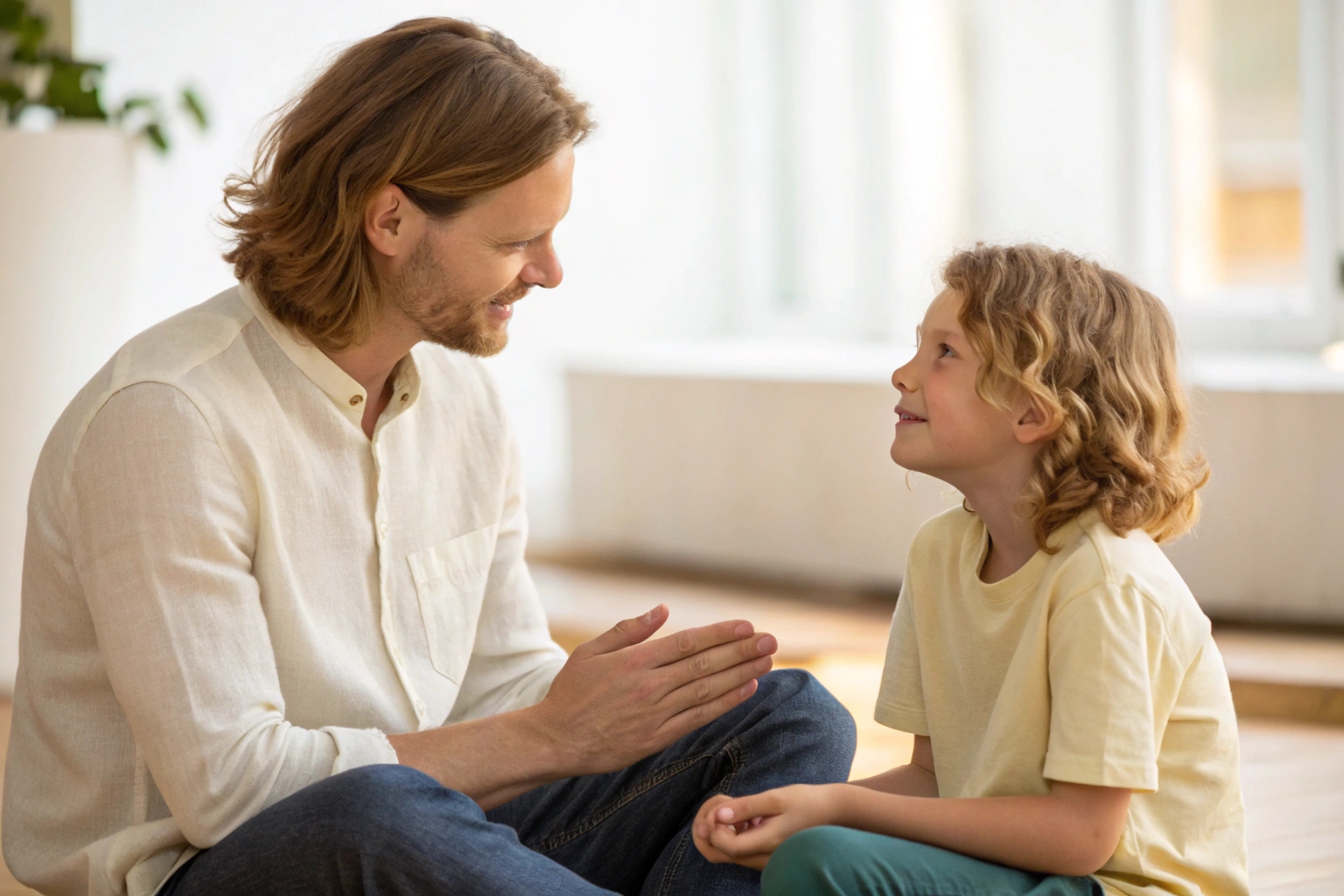Hand-me-downs and thrifted clothes are practical—but what happens when kids resist? Is it okay to make them wear used items anyway?
It’s not ideal to “force” kids to wear second-hand clothes, but with the right communication, values, and respect, parents can encourage it in a positive, empowering way.
Let’s explore the emotional, practical, and relational sides of this parenting question.
How to Talk to Kids About Wearing Used Clothing?
Kids are more likely to accept second-hand clothes when they understand the why. It all starts with how you frame the conversation.
Instead of forcing, involve kids in the process—explain the value, give choices, and make it fun so wearing used clothing feels empowering, not embarrassing.
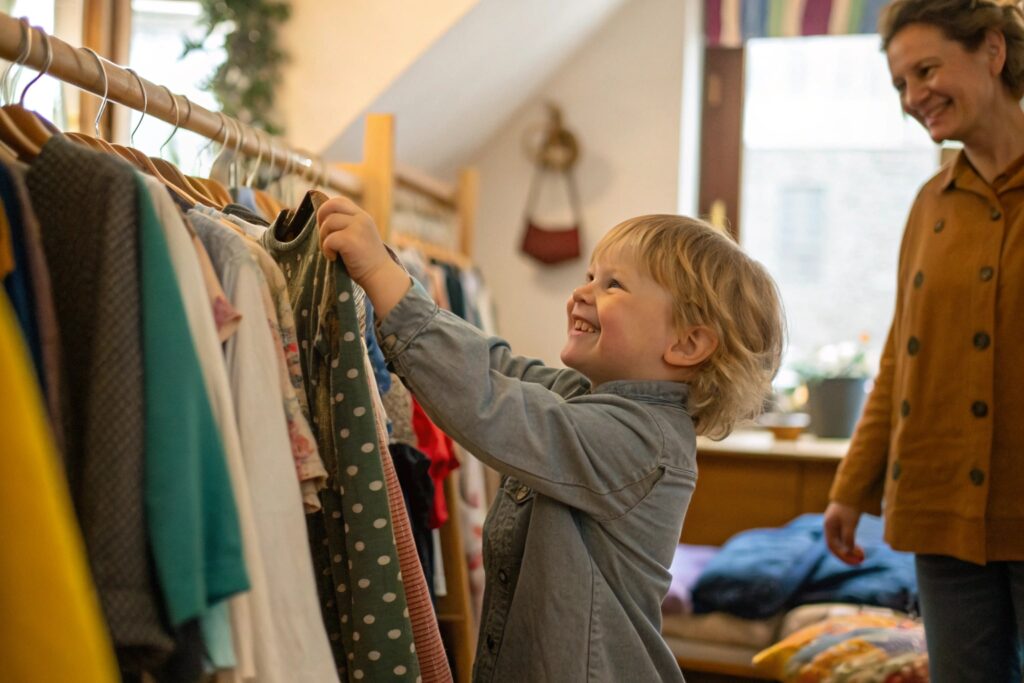
Tips for respectful conversations:
| Strategy | Why It Works |
|---|---|
| Frame it as smart, not cheap | Teaches value over cost |
| Let them help choose | Builds ownership and autonomy |
| Talk about sustainability | Makes kids feel part of a bigger mission |
| Highlight “cool” or “retro” finds | Adds personality and fun |
| Share your own secondhand stories | Normalizes the experience |
Avoid language like “You have to wear this” or “Because I said so.” Instead try:
“This used to be your cousin’s—still in great shape. Want to pick your favorite color?”
What Are the Emotional Effects of Forcing Clothing Choices?
Clothes are a form of self-expression—even for kids. When parents force choices, it can lead to embarrassment, resentment, or low confidence.
Forcing kids to wear second-hand clothing—without conversation or consideration—can hurt their self-esteem, especially if it leads to teasing or social discomfort.
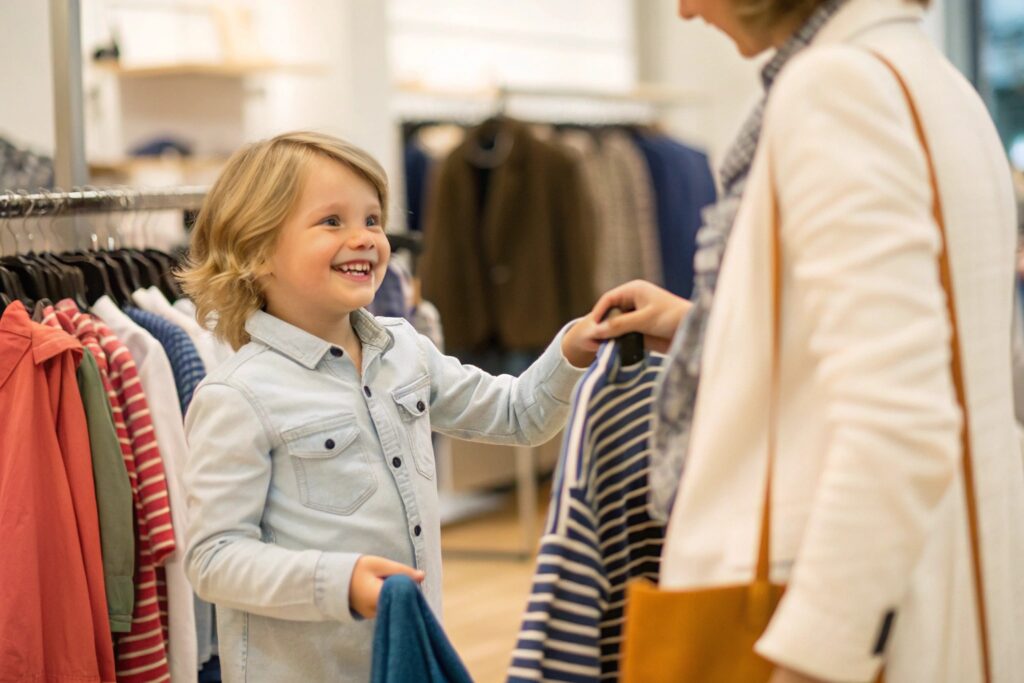
How forced clothing choices affect children:
| Emotional Effect | Possible Outcome |
|---|---|
| Embarrassment | Avoidance of social situations or school |
| Loss of autonomy | Increased resistance or rebellion later |
| Shame about finances | Internalizing class differences |
| Lack of self-expression | Lower confidence in social interactions |
That doesn’t mean second-hand clothes are harmful—only that how they’re introduced and discussed makes all the difference.
Encourage expression: Let kids accessorize, mix pieces, or decorate thrifted items to add personal style.
Pros and Cons of Hand-Me-Downs from a Child’s Perspective?
Some kids love thrift finds. Others feel “less than” when wearing someone else’s clothes. The experience depends on the child’s age, personality, and peer environment.
Hand-me-downs can feel practical or painful depending on how they’re presented and whether kids feel involved in the choice.
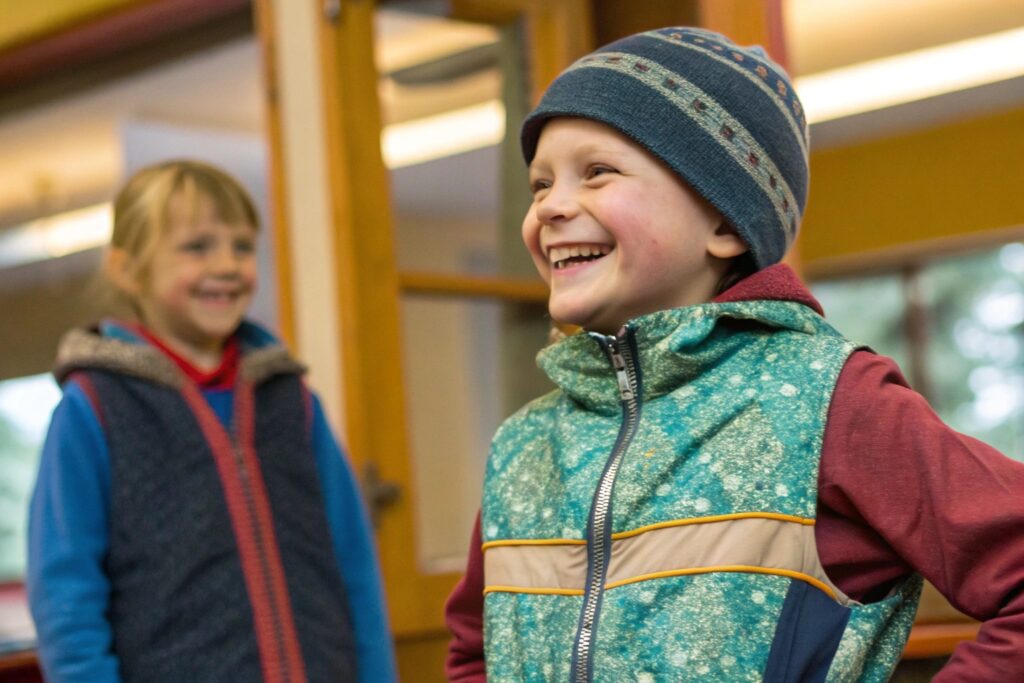
Common kid reactions to second-hand clothing:
| Pros (from a kid’s view) | Cons (from a kid’s view) |
|---|---|
| “This is cool and different!” | “This isn’t my style.” |
| “I get more outfits this way.” | “I always get the leftovers.” |
| “I like saving the planet.” | “My friends might tease me.” |
| “My sibling wore this—it’s special.” | “I want something that’s just mine.” |
Listen to their feelings without judgment. If they express discomfort, validate it rather than dismiss it.
Consider balancing second-hand items with the occasional new piece they choose themselves—this can reduce conflict and promote compromise.
When Second-Hand Clothing Becomes a Parenting Conflict?
When money is tight or values clash, clothing can become a battleground. But forcing rarely leads to long-term harmony.
Second-hand clothing becomes a parenting conflict when it’s used to control rather than teach, or when kids feel unheard or judged for their preferences.
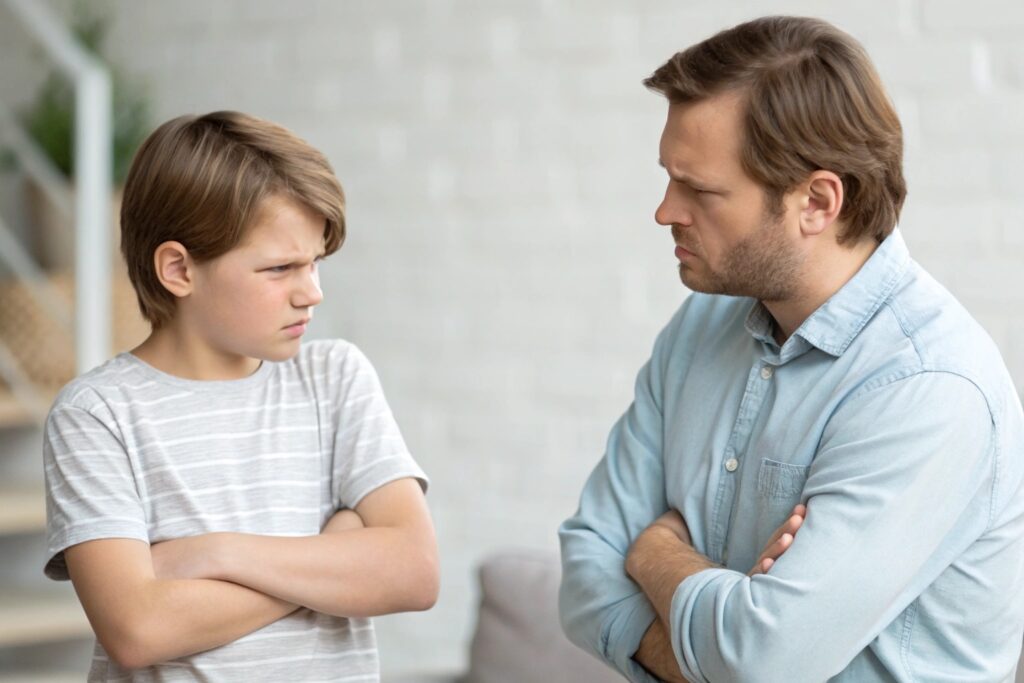
Signs second-hand clothing is causing tension:
| Conflict Sign | What It Might Mean |
|---|---|
| Constant arguments over outfits | Child is seeking more autonomy |
| Embarrassment around peers | They may feel socially insecure |
| Sneaking to change clothes | Resistance signals deeper discomfort |
| Feeling “less than” siblings | Could indicate perceived favoritism |
| Outright refusal to wear clothes | A sign it’s time for a new approach |
Tips to reduce conflict:
- Let kids choose from within a curated thrift haul
- Invite them to help shop at second-hand stores
- Build a reward system: thrift + one new item mix
- Reframe clothes as “chosen” not “inherited”
Clothing is personal—even to a 7-year-old. Meeting in the middle goes a long way.
Conclusion
It’s okay to dress kids in second-hand clothes—but forcing it without empathy may backfire. When parents communicate clearly, offer choices, and make second-hand shopping fun and meaningful, children learn values, feel confident, and feel seen—not just clothed.

